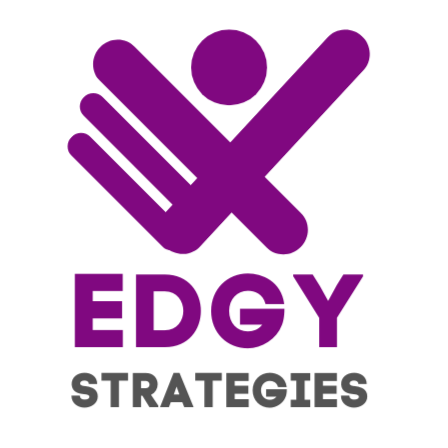Future Ready? Future Proof? Future Fit? Stop the Costly Confusion
Why Three “Future” Words Are Costing You Millions
“Future-proof our five-year plan,” the CFO declares, gesturing at a 50-slide deck.
The CIO snaps back, “Forget five years—let’s be future-ready.”
The CHRO sighs, “We’re hardly future-fit.”
Three phrases, zero alignment. By lunchtime, the off-site strategy has burned through $50,000 in salaries, and no one can explain what “future” actually means.
Executives throw around "future-proof," "future-ready," and "future-fit" like they mean the same thing. They don't. And that confusion is bankrupting strategies.
Each drives different investments, metrics, and behaviors—and confusion is expensive.
Innosight projects that the average S&P 500 tenure will crash to 14 years by 2026 (down from 33 years in 1965), so every year you're building the wrong capabilities is a year your competitors are building the right ones.
1. The Three Strategic Paradigms
| Paradigm | Promise | Hidden Cost | Famous Casualty |
|---|---|---|---|
| Future Proof | Make us immune to disruption | Build expensive armor for a war that has already moved on | Kodak, Nokia, Blockbuster |
| Future Ready | Be prepared to react fast | Always one step behind the change curve—like Borders spending 16 years preparing for e-commerce while Amazon rewrote retail | Traditional retailers vs. Amazon |
| Future Fit | Hard-wired reinvention into our DNA | Requires constant experimentation and cultural comfort with failure | Almost none—they make themselves obsolete before competitors can. |
Future-Proof Failure
Kodak's engineering team actually invented digital photography in 1975 but leadership declared the company "future-proof" with film dominance. That vocabulary shaped 30 years of defensive investments.
Future Ready Trap
Borders spent $100M+ becoming "e-commerce ready" from 2008-2011, hiring consultants and building capabilities while Amazon captured their customers.
Future Fit Success
Microsoft's Satya Nadella killed the "Windows-first" vocabulary in 2014, replacing it with "cloud-first, mobile-first." Revenue jumped from $86B to $143B in six years.
1.1 Future -Proof → The Immunity Illusion
Raise higher walls, reinforce legacy tech, and declare victory.
Yet 70 % of large-scale transformations miss their goals (McKinsey, 2022). “Bullet-proof” often means slow—and slow is fatal when markets shift overnight.
1.2 Future-Ready → The Preparation Trap
Scenario plans, agile playbooks, readiness drills—good, but reactive.
U.S. firms wasted $260 billion on failed software projects in 2020 alone (CISQ), more than the GDP of most countries.
Proof that planning without shipping is just overhead with nicer charts.
1.3 Future Fit → The Reinvention Advantage
Change isn’t an external event; it’s fuel.
BCG finds “built-for-the-future” companies delivered 3× higher five-year total shareholder return than the global average (2023).
Amazon’s Day 1 mindset, Haier’s micro-enterprise model, and Netflix’s perpetual A/B testing demonstrate why: they disrupt themselves before competitors can.
2. The Behavioral Diagnostic
Pick the statements that sound like your organization:
You’re Future Proof if…
Strategy talks about “protecting market position.”
Innovation budget favors proven tech.
Change programs typically begin with lengthy risk-mitigation plans.
You’re Future Ready if…
You have more people planning change than creating change.
“Agility” appears everywhere, yet implementation drags for months.
Scenario planning consumes more budget than live experiments.
You’re Future Fit if…
Experimentation spending exceeds defensive spending.
Failure is treated as data, not defeat.
Planning cycles are measured in weeks, not quarters.
IBM estimates poor-quality data drains $3.1 trillion from the U.S. economy each year—evidence that stale information is the enemy of every “future-proof” claim.
3. Quick-Win Playbook: Kill • Scale • Seed
Quarterly Formula—takes 15 minutes to set, 90 days to measure.
Kill One: Identify a legacy project labelled “future-proof” that hasn’t shipped value in 12 months. Re-route 10 % of its budget to experimentation.
Scale One: Pick a pilot that proved ROI last quarter (e.g., AI-assisted customer support). Double its scope for the next 90 days.
Seed One: Launch a two-week test-and-learn squad for a rising trend. Cap funding at and pre-define kill-fast rules.
Rinse, review, repeat—compounding learning velocity without blowing the budget.
4. Turning Vocabulary into Advantage
| If You’re Here… | Shift To… | First Move |
|---|---|---|
| Future Proof | Reinvention mindset | Kill 10% of defensive spending. Fund live experiments. |
| Future Ready | Practice and preparedness | Add experiment squads to every planning committee |
| Everyone | Vocabulary clarity | Eliminate “future-proof” from strategy vocabulary. Track how conversations change. |
Pro tip
One question kills confusion: "Are we talking Fit, Ready, or Proof?" Ask it at every strategy meeting.
Watch the clarity emerge.
Why it pays
BCG data: adaptive firms generate 67% of returns from growth, while laggards rely on cost cuts—a gap that compounds quarterly.
5. The Million Dollar Question
Confused language drives confused investment.
Clear the vocabulary, and you unlock millions for reinvention.
Which paradigm is your team unconsciously funding—and is it the one you want?
The bottom line: Confused words create confused strategies. Confused strategies create extinct companies.
Further Reading Capsule
Corporate Longevity Report — Innosight, 2024
Beyond Great: Built-for-the-Future Companies — BCG, 2023
Why Do Most Transformations Fail? — McKinsey, 2022
Connect with me on LinkedIn for weekly Future-Fit tips.
Cindy Montgenie, a former Fortune 50 executive and Managing Partner at Edgy Strategies, a strategic advisory and leadership development firm, helps executives racing against disruption eliminate the false choice between quarterly performance and transformation execution.
Her F.I.T Ecosystem™ framework, built for disruption and deployed through strategic partnerships with senior leaders, drives measurable transformation across organizations.
Trilingual keynote speaker (English, Spanish, French) on reinvention, future-fit leadership, change management and sustainable high performance in the AI era.
Host: The Future Fit Edge podcast | edgystrategies.com
